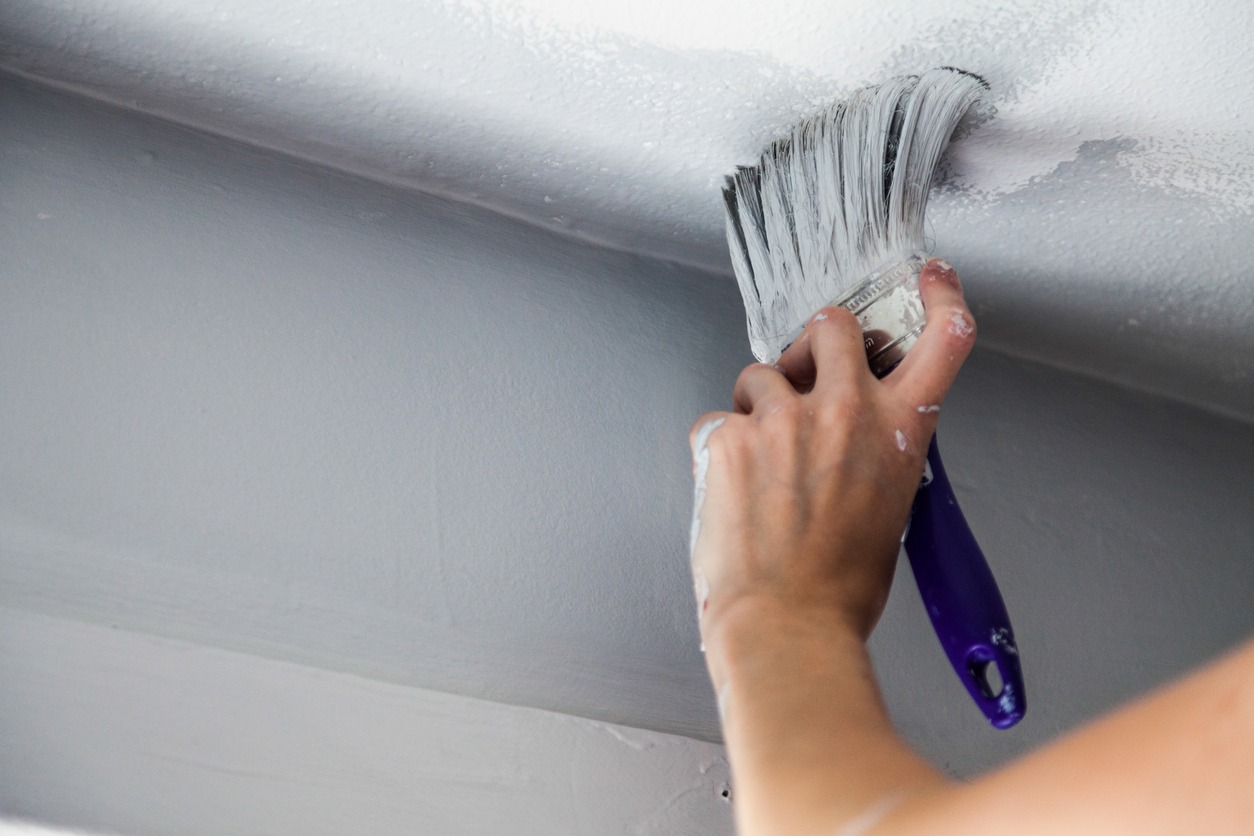Handling textured ceilings during house painting can be tricky. These ceilings require special care and techniques to achieve a smooth and uniform finish. Read on to find out more about the tips and methods for painting textured ceilings so that you can get professional results.
Reason Why Textured Ceilings are Difficult to Paint
Textured ceilings can be challenging to paint for several reasons. Here are several of the main difficulties:
- Uneven Surface: The rough and uneven texture makes it hard to apply paint evenly. This can lead to missed spots and an inconsistent finish.
- Paint Absorption: Textured surfaces tend to absorb more paint, requiring additional coats. This increases the amount of paint needed and the time spent on the project.
- Mess and Drips: Painting overhead on a textured surface can cause more drips and splatters. This makes the job messier and requires more cleanup.
- Difficulty in Reaching Corners: Getting paint into the corners and edges of a textured ceiling is difficult. Special tools and techniques are often needed to achieve full coverage.
- Physical Strain: Painting a ceiling, especially a textured one, can be physically demanding. Holding your arms up for long periods and looking upward can cause strain and fatigue.
- Matching Texture: If repairs or patches are needed, matching the existing texture can be tricky. Inconsistent textures can make the ceiling look uneven.
Tips for Handling Textured Ceilings for Painting

Painting textured ceilings can be challenging, but following the right tips can make the process easier and more effective. Below are some useful tips for handling textured ceilings during painting:
Use the Right Tools
Choosing the right tools is crucial for painting textured ceilings. A thick nap roller is ideal as it holds more paint and reaches into the grooves of the texture. This ensures better coverage and a more even finish. Extension poles can also make the job easier by allowing you to paint from the floor, reducing strain on your arms and neck.
Using a paint sprayer can also be a good option for textured ceilings. Sprayers apply paint evenly and can cover the texture more efficiently than rollers or brushes. However, they require more preparation and cleanup. Make sure to cover all furniture and flooring to protect them from overspray.
Prepare the Surface
Proper surface preparation is key to a successful paint job on textured ceilings. Start by cleaning the ceiling to remove dust and cobwebs. A soft brush or vacuum attachment can help with this task. Ensuring the ceiling is clean will help the paint adhere better and create a more even finish.
If there are any cracks or holes in the ceiling, fill them with a suitable patching compound. Let the compound dry completely before sanding it smooth. This will help create a uniform surface for painting and prevent the imperfections from showing through the new paint.
Apply Multiple Coats
Textured ceilings often require multiple coats of paint to achieve full coverage. Applying thin, even coats is more effective than trying to cover the surface with one thick coat. Allow each coat to dry completely before applying the next one. This helps prevent drips and uneven coverage.
Be patient and take your time with each coat. Rushing the process can lead to missed spots and a less professional finish. Multiple coats will ensure a more durable and attractive result.
Protect the Area
Painting a textured ceiling can be messy. Protect your floors and furniture by covering them with drop cloths or plastic sheeting. Use painter’s tape to secure the coverings and to protect the edges of the walls where they meet the ceiling. This will help keep your space clean and make the cleanup process easier.
Don’t forget to wear protective gear such as goggles and a mask. This will protect you from paint drips and any dust or debris that might fall from the ceiling while you’re working. Safety should always be a priority.
Take Breaks
Painting a ceiling can be physically demanding. Take regular breaks to rest your arms and neck. This will help you maintain a steady hand and avoid fatigue, which can affect the quality of your work. Stretching exercises can also help reduce muscle strain.
Plan your work in sections, allowing time for breaks between each part. This approach will make the task more manageable and help ensure a high-quality finish. Don’t rush the process; taking your time will lead to better results.
Should You Hire Professional Painters to Handle Textured Ceilings?

Hiring professional painters to handle textured ceilings can be a wise decision, especially if you don’t have the skills to paint the ceilings on your own. Here are some reasons why you might consider it:
- Expertise: Professional painters have the experience and skills to handle textured surfaces. They know the best techniques to achieve a uniform and high-quality finish.
- Proper Tools: Professionals come equipped with the right tools for the job. They use specialized equipment that can handle the unique challenges of textured ceilings.
- Efficiency: Hiring professionals can save you time and effort. They can complete the job more quickly and efficiently than most homeowners can on their own.
- Quality Results: Professionals ensure that the paint is applied evenly and smoothly. Their expertise leads to a more polished and professional appearance.
- Safety: Painting ceilings can be physically demanding and potentially hazardous. Professionals are trained to work safely at heights and handle any potential risks.
- Preparation and Cleanup: Professionals take care of all the prep work and cleanup. They protect your furniture and floors and ensure that everything is left tidy after the job is done.
- Problem Solving: If there are issues with your textured ceiling, such as cracks or water damage, professionals can address these problems before painting. This ensures a better and longer-lasting result.
- Peace of Mind: Hiring professionals gives you peace of mind. You can trust that the job will be done right and that your home will be treated with care.
Conclusion
Handling textured ceilings during house painting requires careful preparation, the right tools, and patience. Proper surface preparation, choosing the right paint, and applying multiple coats are key steps to a successful paint job on textured ceilings. If you don’t have the knowledge or skills in painting, you should just hire professionals who are experts in handling textured ceilings.
Custom Painting, Inc. offers expert services for painting textured ceilings. For more information, call us at 925-294-8062 or fill out our Contact Form to get started.

